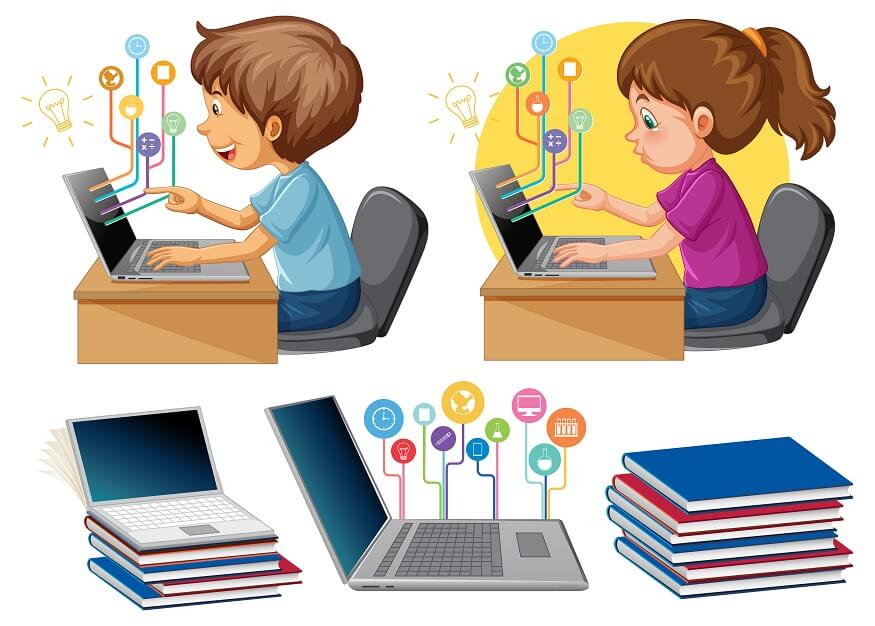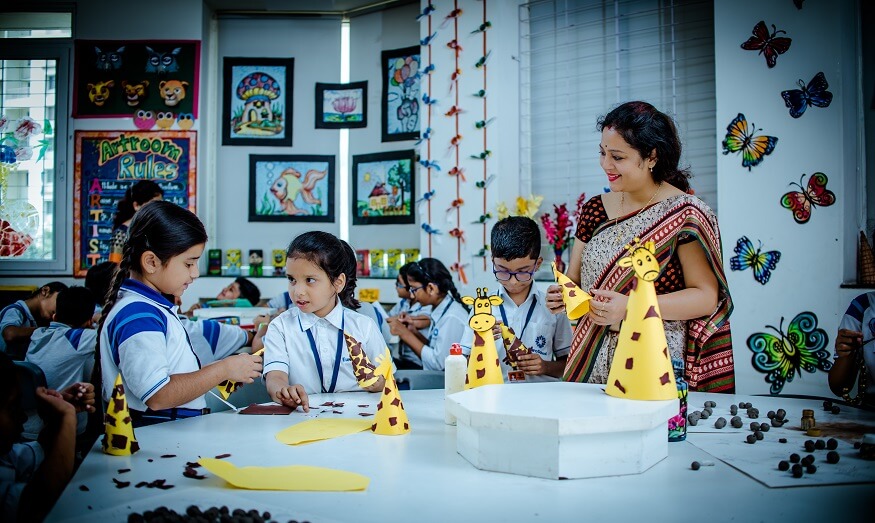Technology has completely changed the way we live. Technology has a role to play in everything we do today, right from doing our daily tasks, paying our bills, consuming entertainment, shopping, travelling, interacting with friends, etc. Education has been one of the most impacted fields. Over the last half a decade or so, technology has completely disrupted education. During COVID we saw how the entire classroom moved online. Not just classes, but the entire education structure, right from entrance exams, interviews, classes, assignments, cultural events, and even exams, all moved to digital platforms such as Zoom and Microsoft Teams.
While COVID forced us to adopt the digitalization of education, it is in reality, not an entirely new phenomenon. EdTech firms such as Byju’s and Unacademy had already disrupted the education sector much before the pandemic struck. Although, it must be admitted that the pandemic accelerated this technological transformation exponentially. Online education offers a mix of advantages and disadvantages.
Let’s look at some advantages of technology in education and some disadvantages of technology in education.
Advantages of Technology in Education
Democratisation of Education
Technology has helped truly democratise education with its wide reach, easy access, and affordability. Students are no more limited to the resources available to them in their physical vicinity. For example, a student sitting in India can access lectures from the best faculty from all over the world from the convenience of their living room. All you need is a smart device with an internet connection.
Making learning more fun
Technology offers a plethora of multimedia tools and interactive technologies that make learning extremely fun and engaging. Latest innovations in technology allow teachers to make use of animation and simulation tools to make learning more real and engaging. The Indian EdTech startup Byju’s disrupted the education sector simply by leveraging the power of animation to simplify complex concepts in maths, science, biology, physics, and chemistry for school students.
Instant Learning
Internet-based platforms such as Google and YouTube ensure that learning is now available at the click of a button. No query, question, or curiosity can go unanswered on Google. Students don’t have to depend on the knowledge and availability of their teachers to clarify their doubts. There is someone who has already clarified that doubt for you and has uploaded a video on YouTube or has written a blog explaining it on Google. Further tech innovations such as ChatGPT are further stretching the limits of this disruption with students having the luxury of getting answers to all their questions instantly. They just need to ask.
Offers Flexibility
Online learning technologies offer immense flexibility to students. Online learning modules are typically recorded in video formats thus allowing students to learn at their own pace. They can pause the video if they want to slow down or skip certain sections if they want to speed up the learning. This kind of flexibility was much needed but very difficult to achieve in physical classroom settings. Asynchronous learning allows learners to adapt the pace of learning to their preferred pace.
Expands Horizons
Technology is a growing field and thus plays a critical role in expanding the thinking horizons of students. Innovative market offerings such as Whitehat Jr teaches coding to children is one such innovation. The access to unfathomable knowledge in multimedia formats makes it easy for students to explore newer concepts, to connect, interact, and learn from others across the world. It is a common sight today to find online classes composed of learners of diverse races and ethnicity from across the world.
Disadvantages of technology in education
Distractions
The good always comes with the bad. So is the case with the role of technology in education. Evolution in technology has created its own set of distractions. Obsession with being ‘online’ on social media and the internet has led to children spending hours hooked onto a smartphone browsing the internet, chatting with their friends on Whatsapp, making Tik Tok videos, or playing addictive video games.
Affects Interpersonal Skills
Spending long hours on the internet or high screen time limits social interactions. Children today are so attached to the screens in their homes without much social interaction. This lack of social interaction limits the development of social interpersonal skills. Interacting with your classmates on a Zoom call and interacting with them in a physical space are two very different experiences.
Affects Health
Technology addiction not only affects interpersonal skills but can also have undesired effects on physical and mental health. Children today are spending a large part of their day hooked on to their devices without much physical movement. Online video games have replaced outdoor sports. This leads to a largely sedentary lifestyle which is not good news for both physical and mental well-being.
Limits Peer Learning
One of the key disadvantages of technology in education is the lack of peer learning. A significant amount of learning happens outside the classroom where students interact with their classmates. Whether it is mutual clarification of doubts or learning life skills through teamwork and collaboration. Education through technology falls short of this very critical aspect.
Limited Practical Learning
While technology has the capability of enhancing the quality of learning, it has its limitations in some cases. For example, can we learn how to swim online? Similarly, there are fields of learning that have a high degree of practical quotient involved and this is where online learning is a limiting factor.
Limited Holistic Development
During COVID we saw a lot of social and cultural activities being creatively recreated online. However, there are limitations. Education is not just about what is taught in the classrooms. Education is also about participating in sports, and other extracurricular activities. A technology-intensive education limits engagement in such activities hindering the holistic personality development of students.
Weak Evaluation Methods
Students cheating during online exams was one of the biggest grouse teachers had during online classes. With students having access to the internet (and now ChatGPT), online evaluations have become a challenge. Online evaluations also limit the ability of teachers to innovate with their evaluation methods. For example, a live project or experiment in a lab cannot be recreated online.
Technology, like any other disruption, comes with both the good and the bad. It is for us to leverage the good and limit the bad. We at EuroSchool leverage best-in-class technology to uplift the learning experience for our students. At the same time, we also educate our students about the pitfalls of technology so that we can minimise the downsides of the role of technology in education.









